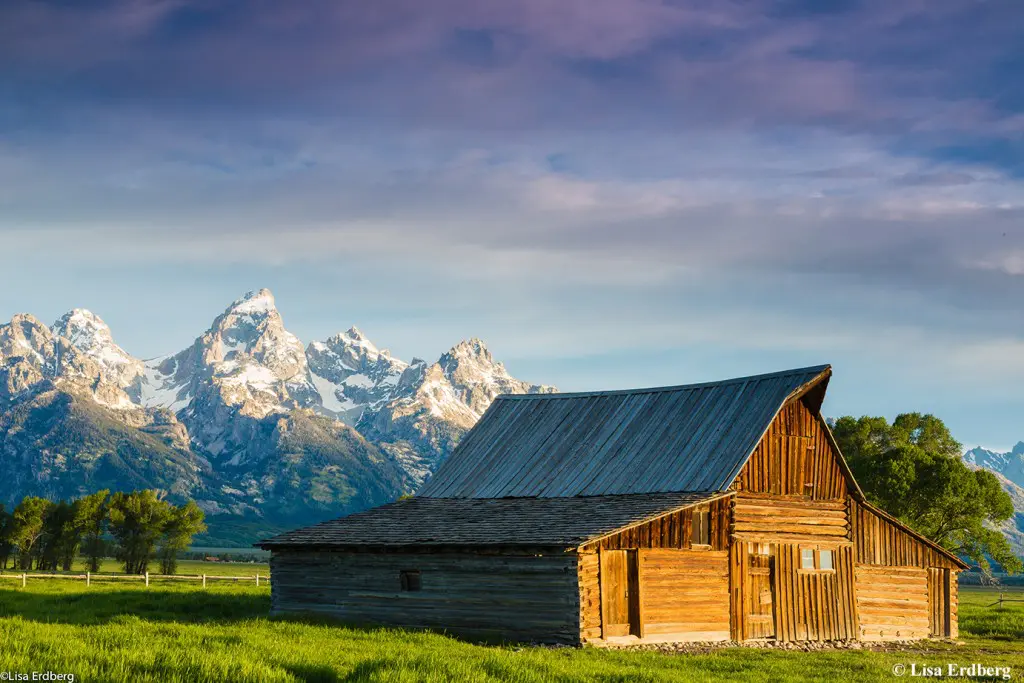T.A. Moulton Barn

Thomas Alma Moulton first homesteaded this property in 1908 as a bachelor. He came over Teton Pass with his brother and a neighbor from Teton Basin, Idaho. The Moultons had moved to Idaho from Utah several decades before. For the first few winters Alma continued to return to the family holdings in Idaho. By 1912 though he had married and he brought his new wife, Lucille, over the pass to permanently settle in the Jackson Hole valley. What remains from his homestead is only a barn, but the barn has created a legacy beyond anything Alma Moulton or his children could have imagined. Billed as the “most photographed barn in America,” this structure had humble beginnings.
Alma Moulton began construction on the central portion in 1913 in order to give his hard-working horses some shelter. The original barn had a flat roof, but it provided a necessary service for the Moulton family. In 1928 the hayloft and steeply pitched gable roof was added. By 1938 and 1939 two shed roofed lean-tos were added to the structure. First the north section for the horses, then the south section for the pigs. The continued addition of separate parts to make the whole gives the barn a unique, but unintentional character that is recognized nationally. Preservation efforts have been undertaken by both the Moulton family and the Grand Teton National Park to ensure that this barn continues to illustrate the trials and successes of homesteading in Jackson Hole.
From our Archives:
Moulton Barn, Mormon Row. Some of the 1994 restoration done to the building appears in this picture. There doors were reattached and new shingles were placed on the roof. There used to be a chicken coop and corrals for cattle nearby. (Photographer: Olie Riniker)
Moulton Barn, east view. (Photographer: Olie Riniker)

